|
| |
| KokaCam : Showing presence information on a live camera image |
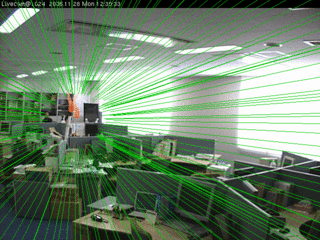
|
As instant messengers become popular, presence information also becomes useful information for casual interaction among a group. We propose a new method to visualize presence information using live camera images. Our new method uses live camera images as a basis for representing virtual shared space for a small community. Presence information - activities of users - is visualized as fsmokesf and effect lines, and superimposed at the seat of each member in the room, which makes easy to understand the mapping between presence information and the corresponding members.
further details... |
| View |
| Effect lines for making 2D animations |
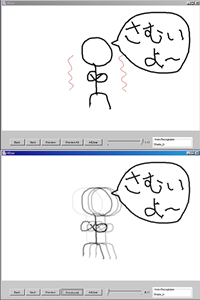
|
We have proposed a method that uses effect lines as inputs for making 2D animations. By drawing effect lines around graphical objects in the editor, the user can easily apply animation effects to the objects and make 2D animations.
further details... |
| View |
| A wearable braille-dot recognizer for people with visual impairment |
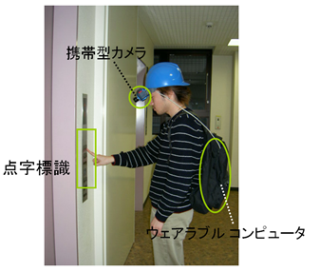
|
We have prototyped a system that reads braille-dots pointed by the user by capturing them with a portable camera. This system will help outing and learning braille-dots.
Yoshiyuki's page
VIDEO Usage@Recognizing braille-dots |
| View |
| An interface for making 3D character motions in Mixed-Reality environment |
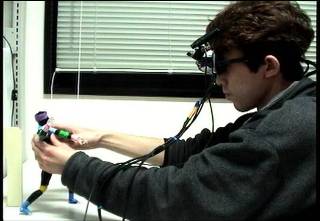
|
We propose a new technique to support making 3D character animations with DID (Dinosaur or Direct Input Device). The key idea is to superimpose the image of a CG model on a physical armature using video see-through Head-Mounted Display (HMD). Using this technique, animators can easily recreate the posture of the physical armature. In addition, the system shows candidates of postures for animators who are not familiar with target motions. We have implemented a prototype system for making character animations using this technique.
VIDEO Paper |
| View |
| SilF : a sketching tool for cartoon-like pseudo-3D illustrations based on 3D outlines |
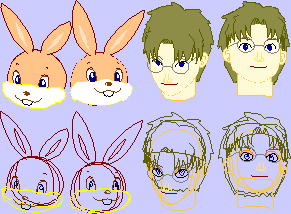
|
In this tool, models are not 3D polygons that have complete 3D surface information, but are 3D outlines similar to 2D illustrations. The user can draw models like 2D illustrations, but the created models can be rotated and viewed from various angles. The target of this tool is cartoon-like illustrations such as characters, avatars, and human-like agents that are used in interactive applications and games.
Kota's Page |
| View |
| Sketch-based modeling of flowers and plants |
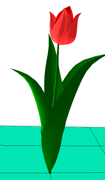
|
3D flower models are important components for impressive virtual reality environments. However, flowersf leaves or petals are 3D free curved-surfaces and they are very difficult to model. We present a user interface with which the user can easily model flowers using freehand sketches. The user interfaces for generation, transformation, and copy are specialized to model leaves and petals, and thus it is more intuitive and flexible comparedwith rulebasedmodeling systems or library-based approaches.
Takashi's page |
| View |
| A robust method to segment object regions using hands |
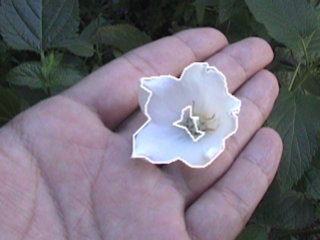
|
We are developing a mobile system to identify wild flowers and grasses mainly from object images captured by a camera in the outdoor scene. In such cases, it is important to robustly identify the region of the target object. To achieve this, we have developed an interactive technique to input the object region by placing a hand behind the object.
APCHI2004 paper |
| View |
|
|
|